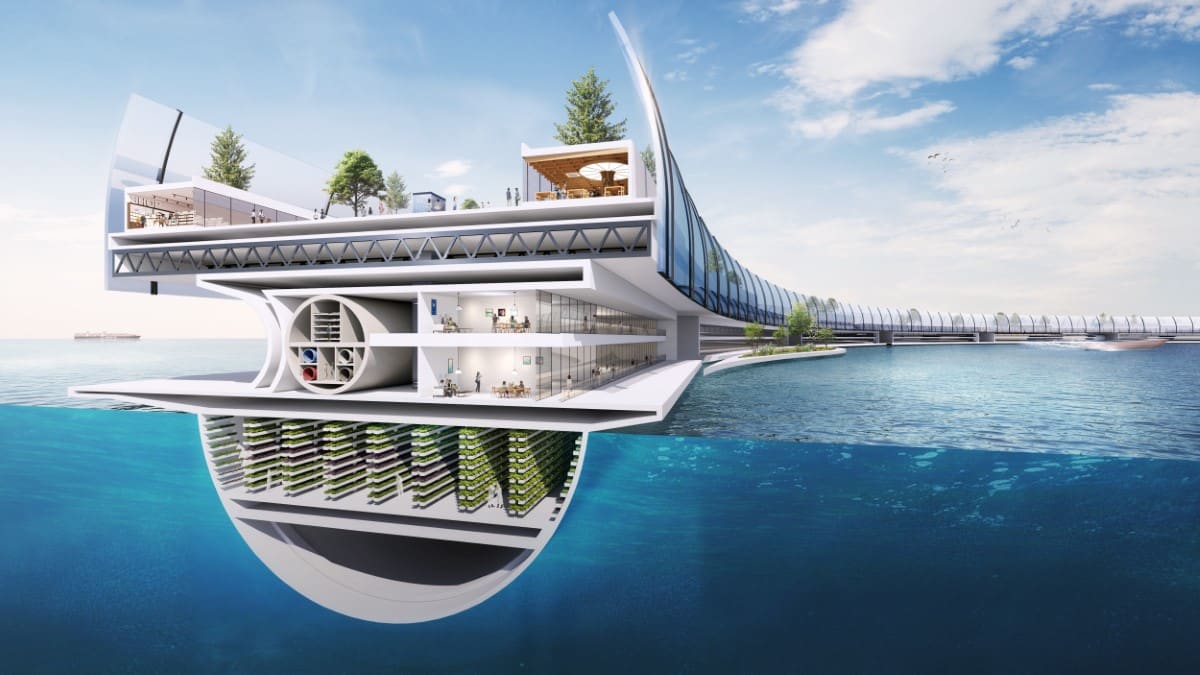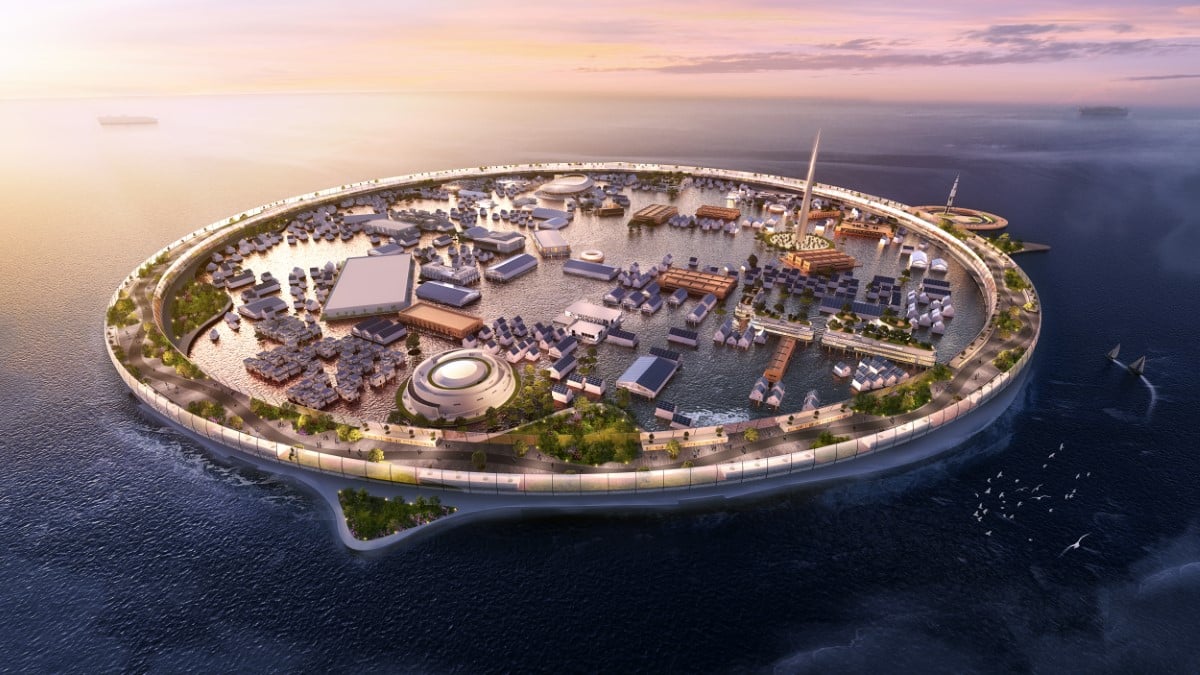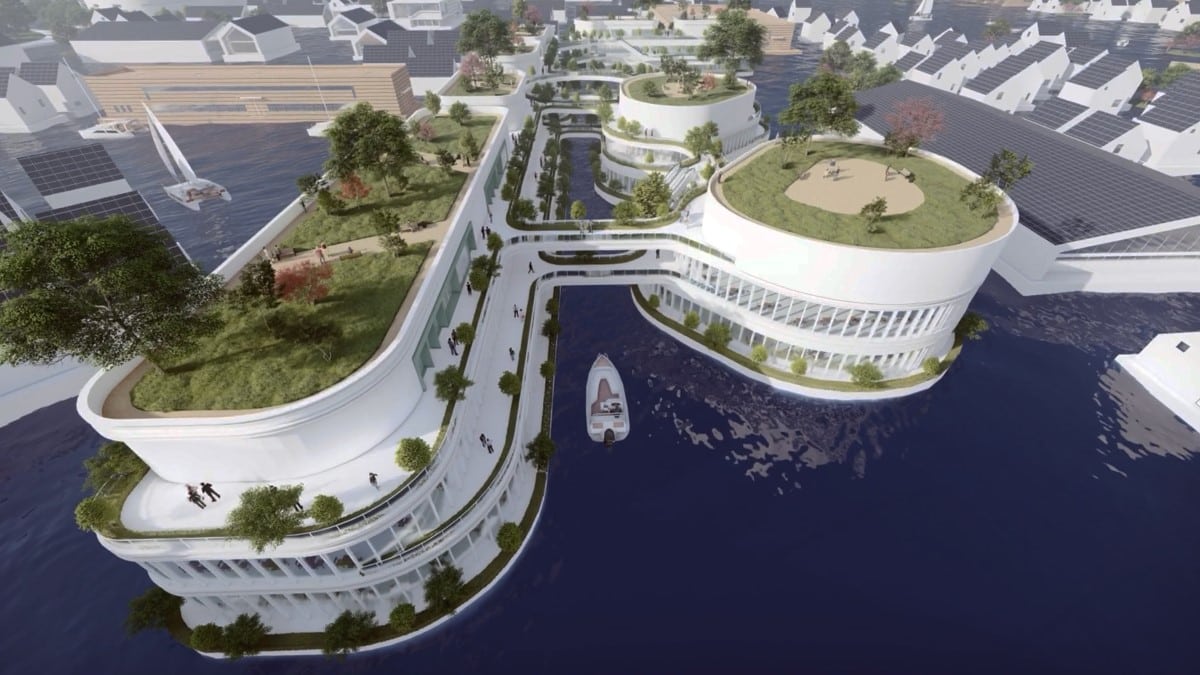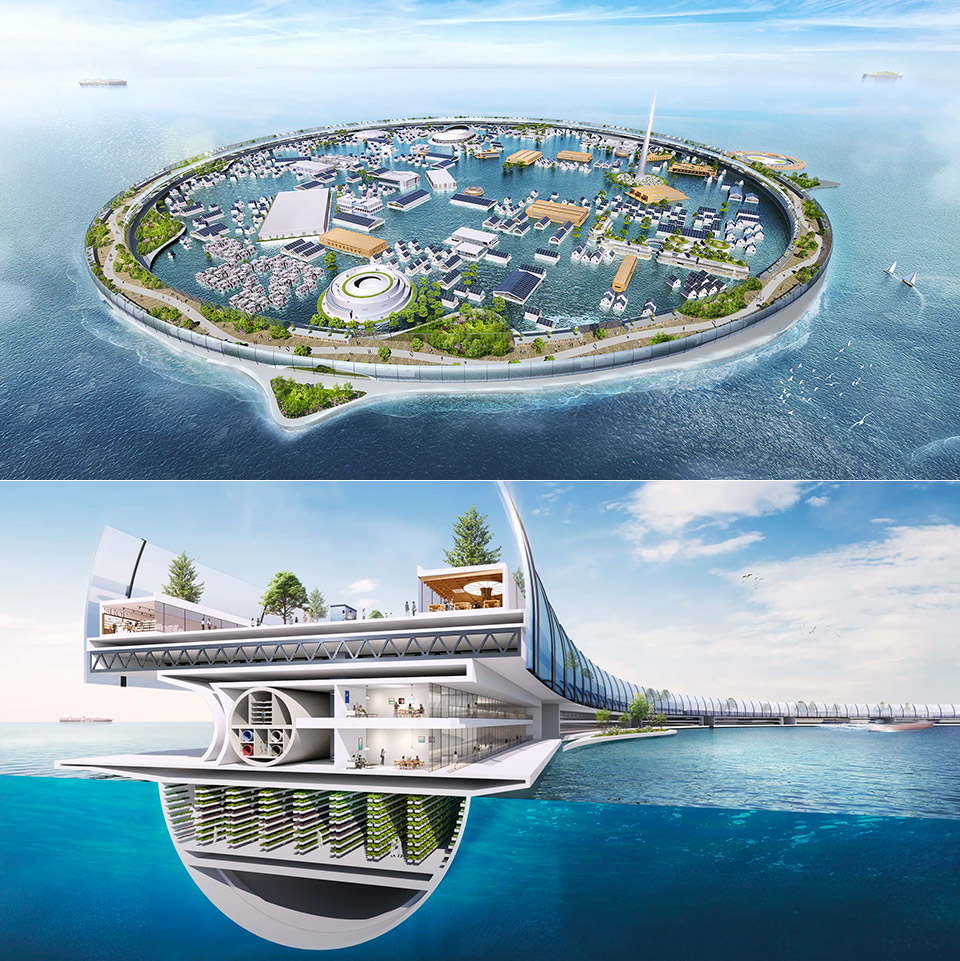Dogen City: Japan’s Blueprint for Climate-Resilient Urbanism

Japan is setting a new standard for the future of urban survival with its plan to construct Dogen City—a massive floating metropolis designed to safely house 40,000 residents. Developed by the innovative startup N-Ark, this futuristic city is projected to be operational by 2030, promising an unprecedented model of sustainable and disaster-resilient living against the mounting challenges of climate change.
Advanced Design for Ultimate Stability
Dogen City will be constructed as a massive ring-shaped floating platform. This unique design not only optimizes space but ensures superior stability, allowing the structure to remain balanced and functional even when subjected to powerful tsunamis and the frequent earthquakes of the Pacific Rim. This level of resilience is central to protecting its 40,000 residents from marine threats.
Smart Infrastructure and Self-Sufficiency
The city is engineered to be entirely self-sufficient, minimizing reliance on traditional land-based supply chains:
Food Security: Vertical farming systems and advanced aquaculture will provide a stable, fresh food supply for the entire population.
Energy: Power will be generated through integrated renewable energy systems (likely solar or tidal) installed on and around the ring structure.
Health and Connectivity: The floating city will incorporate smart healthcare facilities. Notably, an underwater data center will provide stable, high-tech connectivity, fostering technological innovation right in the middle of the ocean.
One of the most revolutionary aspects is Dogen City’s strategic mobility. The structure is engineered to be able to move with ocean currents in a controlled manner, allowing it to evade or minimize the impact of extreme weather events like major storms.
N-Ark’s Dogen City is more than an engineering project; it is a blueprint for the future, demonstrating that humanity can create modern, thriving urban centers that respect and adapt to nature’s changing conditions. This model promises to set the standard for coastal regions and island nations facing rising sea levels.











